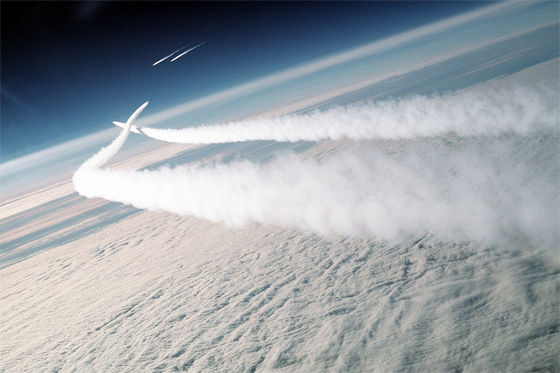Sujoi Su-30 MK2
+54
Ch0pos
Tato
Abraham R Flores
azulez70
Llanero
rafahot59
MIG
flint
americo22
Rocker
nekulturny
belushitaxx
ARV Mariscal Sucre
armandodfl
Tiuna
jc65
Nilo
Lucio
OnePersonOnEarth
Harigane
Pinerón
aprendis
delta074
panzerbrutalis
Goblin
oscaramh
Abraham Valdiviezo
paintball-Militar
-Clark-
RadicalLibre
Prietocol
henry G
Buzodecombate
orlando jose navas pachec
orinoco_man
arivera_41
jeepero911
sarisarinama
kamutan
huracan
chicharron
siberianwolf
vudu 1
calt2002
CHACAL
horz
falcor010
Musthafa
Ben-David
HUNTER VZLA
Anti-imperialista
GuerrerodelAire
seaman
Gerardo
58 participantes
Página 21 de 39.
Página 21 de 39. •  1 ... 12 ... 20, 21, 22 ... 30 ... 39
1 ... 12 ... 20, 21, 22 ... 30 ... 39 
 Re: Sujoi Su-30 MK2
Re: Sujoi Su-30 MK2
vudu 1 escribió:Jajajajajjajajajaja LA MIG SE IRRITA TODA...... CON LAS VAINAS D.CHACAL JAJAJAJAJAJAJA QUE PENDEJITO...

MIG- Cabo Segundo
- Cantidad de envíos : 2196
Fecha de inscripción : 24/01/2010
Localización : La Guayana Esequiba
 Re: Sujoi Su-30 MK2
Re: Sujoi Su-30 MK2
Jajajajajajajajajajajajajaj que locota amarrate..
Información que veraz y ojo siempre se ha visto....
Lo demas es historia.......
Información que veraz y ojo siempre se ha visto....
Lo demas es historia.......
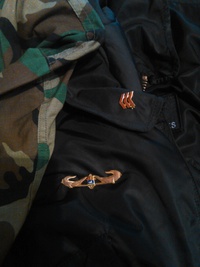
vudu 1- Capitán
- Cantidad de envíos : 12486
Fecha de inscripción : 24/03/2011
Localización : selva!!!
 Re: Sujoi Su-30 MK2
Re: Sujoi Su-30 MK2
vudu 1 escribió:Jajajajajajajajajajajajajaj que locota amarrate..
Información que veraz y ojo siempre se ha visto....
Lo demas es historia.......

MIG- Cabo Segundo
- Cantidad de envíos : 2196
Fecha de inscripción : 24/01/2010
Localización : La Guayana Esequiba
 Re: Sujoi Su-30 MK2
Re: Sujoi Su-30 MK2
verga aparecio Bichita, andaba perdida, bue, ella siempre ha sido una perdida! y con ese look nuevo parece que esta tomando maltodextrina
Mig, la Xamba habló de tí pero se equivocó de nombre y colocó el mio, no sabes un carajo delos Mig 31
Mig, la Xamba habló de tí pero se equivocó de nombre y colocó el mio, no sabes un carajo delos Mig 31

CHACAL- Sargento Primero
- Cantidad de envíos : 4269
Fecha de inscripción : 09/03/2013
Localización : Ejido
 Re: Sujoi Su-30 MK2
Re: Sujoi Su-30 MK2
CHACAL escribió:verga aparecio Bichita, andaba perdida, bue, ella siempre ha sido una perdida! y con ese look nuevo parece que esta tomando maltodextrina
Mig, la Xamba habló de tí pero se equivocó de nombre y colocó el mio, no sabes un carajo de los Mig 31

MIG- Cabo Segundo
- Cantidad de envíos : 2196
Fecha de inscripción : 24/01/2010
Localización : La Guayana Esequiba
 Re: Sujoi Su-30 MK2
Re: Sujoi Su-30 MK2
El que se pone a pelear con chacal loco termina si es que ya no esta.

flint- Primer Teniente
- Cantidad de envíos : 11162
Fecha de inscripción : 10/03/2011
Localización : Carabobo
 Re: Sujoi Su-30 MK2
Re: Sujoi Su-30 MK2
Xamber escribió:El que se pone a pelear con chacal loco termina si es que ya no esta.
Yo trato de evitar cualquier discusion con cualquier extremista sea de oposicion o chavista. El resultado siempre termina igual por una razon u otra. Para los extremistas de cualquier bando politico, la discusion no represnta una exposicion de ideas sobre hechos, si no un foro politico sobre suposiciones para hacer propaganda politica. De ahi que si cuestionas algo siempre saldra a relucir los insultos personales por encima de la tematica de la discusion.
Regresando al hilo me pregunto cual seria la contraparte de un SU-30 en los arsenales de la OTAN?

orinoco_man- Cabo Primero
- Cantidad de envíos : 3610
Fecha de inscripción : 06/09/2009
Localización : Venezuela
 Re: Sujoi Su-30 MK2
Re: Sujoi Su-30 MK2
orinoco_man escribió:Xamber escribió:El que se pone a pelear con chacal loco termina si es que ya no esta.
Yo trato de evitar cualquier discusion con cualquier extremista sea de oposicion o chavista. El resultado siempre termina igual por una razon u otra. Para los extremistas de cualquier bando politico, la discusion no represnta una exposicion de ideas sobre hechos, si no un foro politico sobre suposiciones para hacer propaganda politica. De ahi que si cuestionas algo siempre saldra a relucir los insultos personales por encima de la tematica de la discusion.
Regresando al hilo me pregunto cual seria la contraparte de un SU-30 en los arsenales de la OTAN?
Existen varias
Panavia Tornado :
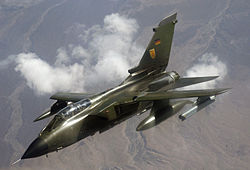
El f-18 :

Y el F-15 :
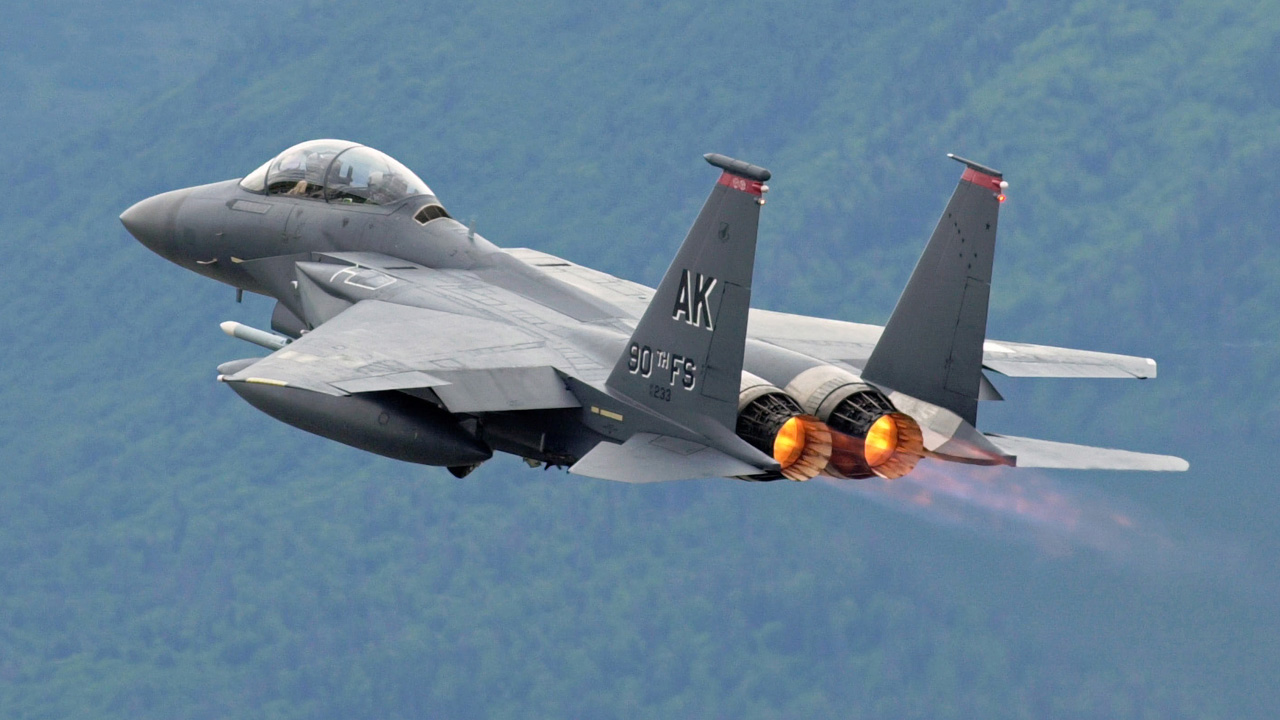

flint- Primer Teniente
- Cantidad de envíos : 11162
Fecha de inscripción : 10/03/2011
Localización : Carabobo
 Re: Sujoi Su-30 MK2
Re: Sujoi Su-30 MK2
El F-15 y el F-18 me parece que si estan a similar nivel que un Su-30. Sin embargo, me sorprendio ver el Panavia Tornado ya que yo lo pondria mas al nivel de un F-16. Me parece que el Euro Fighter Typhoon podria estar quizas mas al nivel del SU-35 que del Su-30.

orinoco_man- Cabo Primero
- Cantidad de envíos : 3610
Fecha de inscripción : 06/09/2009
Localización : Venezuela
 Re: Sujoi Su-30 MK2
Re: Sujoi Su-30 MK2
El Panavia Tornado es un bimotor pesado, originalemente pensado para superioridad aerea al igual que el su-27 y el F-15, pero tiene otras versiones, de guerra electronica, una dedicada a interdiccion, y otra de guerra naval, osea Tornado ADS, IDS ETC ...
Acuérdate de que un Su-30 es un su-27 optimizado para bombardeos, misiones de ataque y naval strike, la diferencia con un F-15 es que el Eagle puede usar dos pod ( LITENING O LATRIN ) como nuestros F-16 para los ataques de precisión, ademas de eso todos esos aviones pueden usar armamento stand off) .
Ahora los flanker no usan el pod porque los rusos por ejemplo en lo que respecta a bombardeo los rusos instalan en los aviones los flir, como es el caso del platan que viene integrado en el avion, es decir en los aviones destinados a hacer bombardeos de precisión como el mig-29 ya viene un flir integrado.
Sin embargo los flanker MKI, de la fuerza aérea de la India han integrado los pod damocles a sus flanker, es decir se les puede integrar , pero la fuerza aérea de Rusia no los usa, y francamente creo que no los necesita.
El F-18 puede usar todas las mismas armas del F-15 pero con sus limitaciones, puesto que en combate aire aire, velocidad y maniobrabilidad el F-15 es superior, el radar del Eagle es superior al del hornet.
Yo pondria al F-18 al nivel del mig-29, y al flanker con el eagle y el tornado.
De todo destaco que los aviones occidentales no tiene IRST EN EL MORRO.
Acuérdate de que un Su-30 es un su-27 optimizado para bombardeos, misiones de ataque y naval strike, la diferencia con un F-15 es que el Eagle puede usar dos pod ( LITENING O LATRIN ) como nuestros F-16 para los ataques de precisión, ademas de eso todos esos aviones pueden usar armamento stand off) .
Ahora los flanker no usan el pod porque los rusos por ejemplo en lo que respecta a bombardeo los rusos instalan en los aviones los flir, como es el caso del platan que viene integrado en el avion, es decir en los aviones destinados a hacer bombardeos de precisión como el mig-29 ya viene un flir integrado.
Sin embargo los flanker MKI, de la fuerza aérea de la India han integrado los pod damocles a sus flanker, es decir se les puede integrar , pero la fuerza aérea de Rusia no los usa, y francamente creo que no los necesita.
El F-18 puede usar todas las mismas armas del F-15 pero con sus limitaciones, puesto que en combate aire aire, velocidad y maniobrabilidad el F-15 es superior, el radar del Eagle es superior al del hornet.
Yo pondria al F-18 al nivel del mig-29, y al flanker con el eagle y el tornado.
De todo destaco que los aviones occidentales no tiene IRST EN EL MORRO.

flint- Primer Teniente
- Cantidad de envíos : 11162
Fecha de inscripción : 10/03/2011
Localización : Carabobo
 Re: Sujoi Su-30 MK2
Re: Sujoi Su-30 MK2
Cazas como el mi-29, mig -35 su-27, su-30, y el su-35, tienen el IRST instalado en el morro como se puede ver en las fotos y videos:


Que es un IRST ? DE LA WIKIPEDIA :
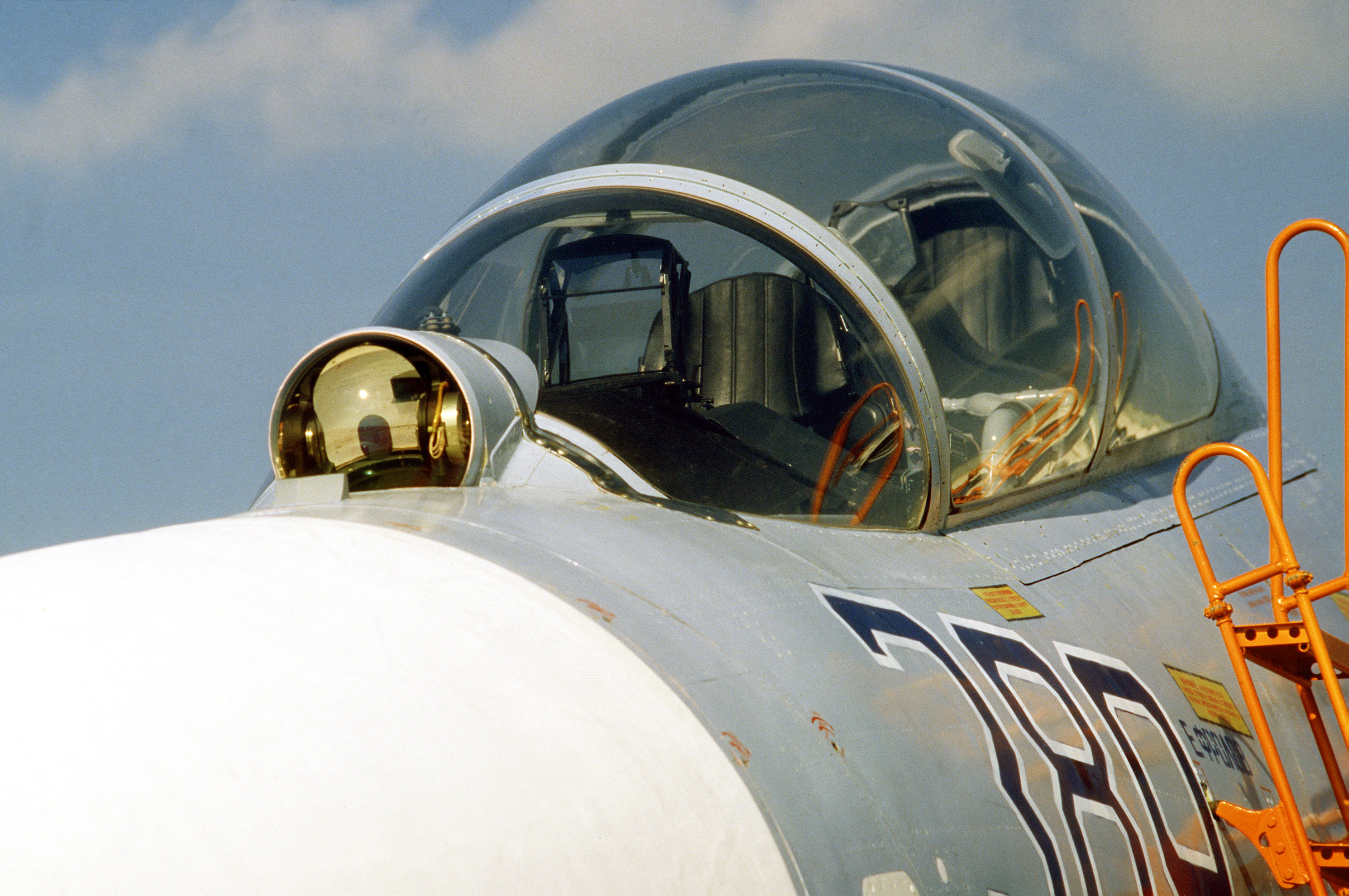
Recien por estas fechas ya Boeing se dio cuenta de que la USAF nescesitaba esta capacidad y entre otras diseño el legion pod o talon hate :
LEGION POD / TALON HATE

Sensing and Networking for Targeting


Que es un IRST ? DE LA WIKIPEDIA :

SEGUN WIKI escribió:Un sistema de búsqueda y seguimiento por infrarrojos, también conocido por sus siglas en inglés IRST (infra-red search and track)1 es un método para detectar y rastrear objetos que emiten radiación infrarroja como aviones y helicópteros.2 Un IRST en general es un tipo de infrarrojo de barrido frontal (FLIR). Son sistemas pasivos, lo que significa que no emiten ningún tipo de radiación por si mismos, a diferencia de un radar. Eso les da la ventaja de que son difíciles de detectar. Sin embargo, tienen un alcance limitado en comparación con los radares porque la atmósfera atenúa la radiación infrarroja hasta cierto punto (aunque no tanto como en la luz visible) y porque la meteorología adversa también la puede atenuar (de nuevo, no tanto como en los sistemas visibles). La resolución angular a cortas distancias es mejor que la de un radar debido a la menor longitud de onda.
Recien por estas fechas ya Boeing se dio cuenta de que la USAF nescesitaba esta capacidad y entre otras diseño el legion pod o talon hate :
LEGION POD / TALON HATE

Sensing and Networking for Targeting
Legion Pod is a multi-function sensor system that supports collaborative targeting operations in radar-denied environments. Flexible by design and production-ready, Legion Pod is set to serve as the next sensor system of choice for fixed-wing aircraft.
Using Lockheed Martin’s IRST21 sensor, networking and advanced processing technology, Legion Pod provides high-fidelity detection and tracking of air-to-air targets. Its plug-and-play architecture also makes it easily transportable across numerous platforms, including fighter and non-fighter aircraft.
Designed for flexibility, Legion Pod accommodates additional sensors within its current structure, acting as a multi-function sensor suite without costly aircraft or system modifications. This ensures it can meet both current and emerging customer requirements.
Housed in a 16-inch diameter structure, Legion Pod’s baseline configuration includes an advanced processor and datalink capability in addition to its infrared search and track technology. With capabilities unmatched by other targeting systems and the ability to accommodate additional sensors at low cost, Legion Pod fulfills warfighters’ critical needs and sets itself apart from the competition.

flint- Primer Teniente
- Cantidad de envíos : 11162
Fecha de inscripción : 10/03/2011
Localización : Carabobo
 Re: Sujoi Su-30 MK2
Re: Sujoi Su-30 MK2
Pero no se confundan el TALON HATE no es solo un pod IRST, es muchas cosas mas ...
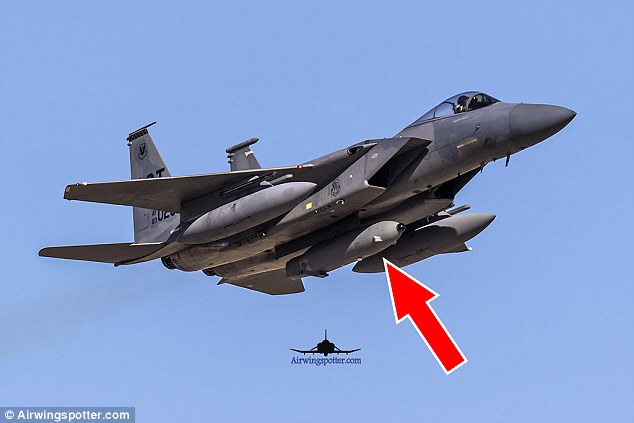

Miren esta grafica :
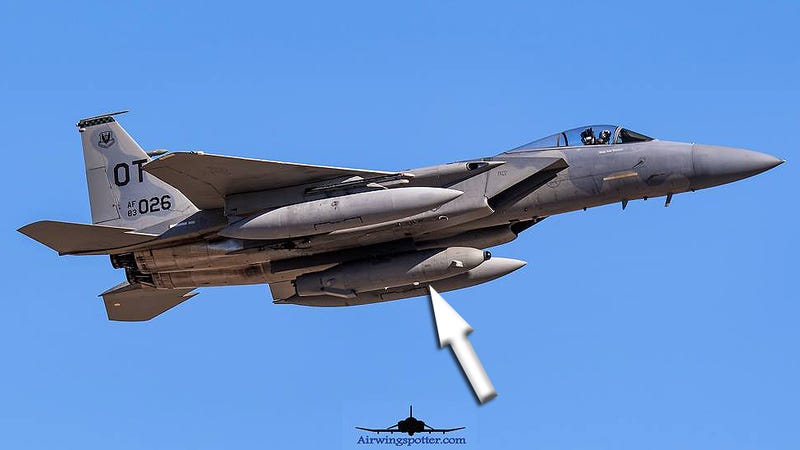
Ademas del IRST es un sistema que permite retransmitir informacion el el standard LINK 16, LINK 16 un sistema standar de transmision de datos en alta velocidad, dicho estandar es usado por la otan en sus comunicaciones, el pod este no es que permite comunicarse usando el standard puesto que los cazas, aviones y etc ya de por si pueden hacerlo, el legion pod da la posibilidad de RETRANSMITIR DICHOS DATOS a todo tipo de plataformas otros aviones de todo tipo, buques etc ... Para mi mas importante que el IRST es la habilidad de recibir datos de diferentes aviones y poderlos retransmitirlos por una misma via, algo especialmente util para usar el F-15 como puente de uso para retransmitir datos a los F-22 o F-35 , miren la grafica :



Miren esta grafica :

Ademas del IRST es un sistema que permite retransmitir informacion el el standard LINK 16, LINK 16 un sistema standar de transmision de datos en alta velocidad, dicho estandar es usado por la otan en sus comunicaciones, el pod este no es que permite comunicarse usando el standard puesto que los cazas, aviones y etc ya de por si pueden hacerlo, el legion pod da la posibilidad de RETRANSMITIR DICHOS DATOS a todo tipo de plataformas otros aviones de todo tipo, buques etc ... Para mi mas importante que el IRST es la habilidad de recibir datos de diferentes aviones y poderlos retransmitirlos por una misma via, algo especialmente util para usar el F-15 como puente de uso para retransmitir datos a los F-22 o F-35 , miren la grafica :


flint- Primer Teniente
- Cantidad de envíos : 11162
Fecha de inscripción : 10/03/2011
Localización : Carabobo
 Re: Sujoi Su-30 MK2
Re: Sujoi Su-30 MK2
De todas formas consegui un articulo que explica de mejor forma que es un IRST
Conclusion cual es la ventaja del IRST?
La ventaja es que puedes detectar, seguir y atacar blancos tanto en tierra como en el aire, sin tener el radar encendido
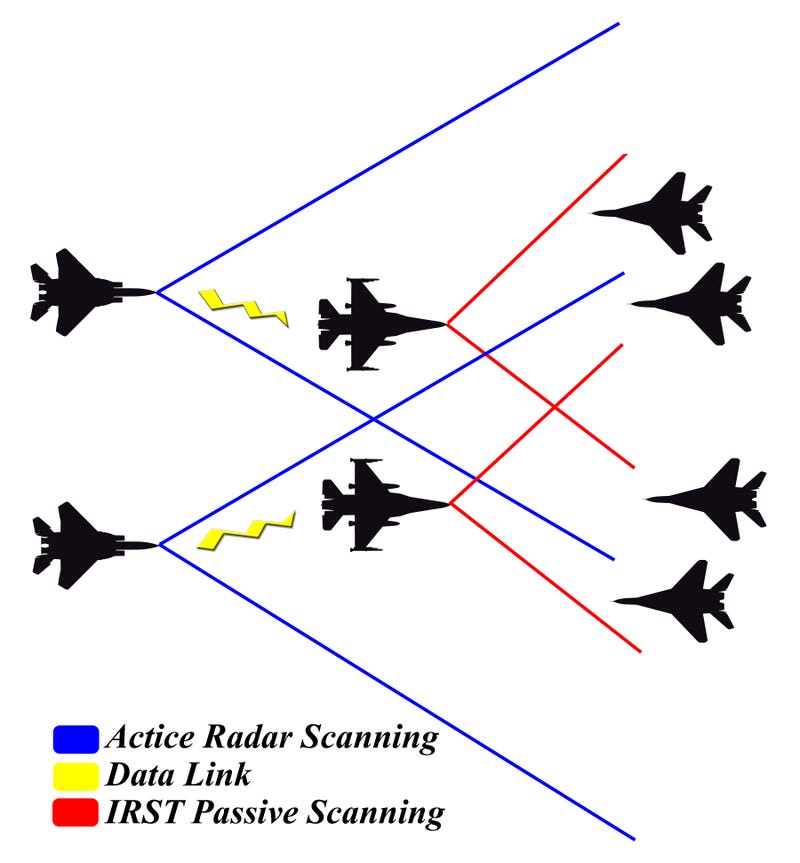
Es hasta util para atacar aviones quinta generacion, tipo F-22, F35 etc ...
Por ejemplo nuestros Flanker equipados con el OLS-30 pueden detectar y seguir a otro caza a una distancia de 90 km, es decir podrían lanzar misiles R-77 e irian hacia el avion enemigo sin que este se diera cuenta de que lo están atacando, siendo guiados por el IRST.
Los unicos aviones que tiene algo que podría prevenir esto es el rafale con su SUITE THALES SPECTRA y el EF-200O con su complejo PIRATE.
Introductiondefense issues escribió:
Airborne IRST properties and performance
IRST is a sensory device which uses IR (infrared) radiation for detection and targeting purposes. IR radiation has wavelength of 0,75 to 1.000 microns (micrometers), longer than wavelengths of color red in the visible spectrum (visible spectrum ranges from 0,39 to 0,7 microns, with violet at 0,4 and red at 0,7 microns). It is given off by all objects above absolute zero, though objects that are below average temperature of their surroundings will absorb far more IR radiation than they will give out. Unlike FLIR which is a targeting device, IRST can be used for initial detection as well.
Infrared radiation is divided into near infrared (0,75 – 1,4 microns), shortwave infrared (1,4 – 3 microns), midwave infrared (3 – 8 microns), longwave infrared (8 – 15 microns) and far infrared (15 – 1.000 microns). These have different properties. For example, glass is opaque to LWIR band but transparent to SWIR band, and significantly degradess image in MWIR band. MWIR sensors are far better at penetrating fog and clouds than other wavelengths, while LWIR sensors have superior atmospheric performance. As a result, while SWIR sensors can use glass, MWIR and LWIR sensors have to use exotic materials such as germanium and sapphire. 5-7 micron band suffers 100% absorption by water particles.
IR bands are also associated with temperatures of bodies producing radiation. Visible light is associated with temperatures above 1.000 *C. Next come IR bands: 0,7-4 microns (1.000 – 400 *C); 5-25 microns (400 – -150 *C) and 25-350 microns (this is a civilian, not military, division). Bodies at room temperature have radiation peak at around 10 microns, while 3-5 micron band is used in civilian applications for its effectiveness in tropical conditions.
In civillian purposes, astronomers use IR telescopes to penetrate dusty regions of space that block off visible light. NASA also has an airborne IR system – SOFIA (Stratospheric Observatory for Infrared Astronomy) which is flown at altitudes of over 41.000 ft, allowing 85% of the entire IR spectrum to reach it. Its service ceilling is 45.000 ft.
First IRSTs were deployed in 1950s on F-101, F-102 and F-106 interceptors. They were also used in F-8E, F-4 (B and C models only) and Swedish J-35A and J-35F-2 (1965-1967). However, they were primitive and were slaved to the radar, as opposed to modern-day independent systems. Any IR radiation falling on the sensor would generate a blip; consequential high false alarm rate meant that IRST was typically only used for (manual) radar targeting.
In 1960s and 1970s, Soviets deployed IRST units on their MiG-23, MiG-31, Su-27 and MiG-29 fighters. This was intended to provide passive BVR surveillance capability to fighters, and also as a way of countering Western advantage in radar technology and countermeasures. In fact, MiG-23 and MiG-31 interceptors were able to track the SR-71 recon aircraft from large distance, possibly up to 100 kilometers. This was despite the fact that the system was rather primitive, and that MiG-31s own skin and canopy would reach temperatures of over 760 degrees Celsius during the intercepts. MiG-23 had an IRST capable of detecting the F-16 at 35-40 km head on and 60 km from the rear. Later developments of Su-27 and MiG-29 families all have internal IRST.
General IRST properties
Due to relatively shorter wavelength, IRST is more sensitive than radar to adverse weather conditions. Much of the infrared radiation is absorbed by water vapor, carbon dioxide, methane and ozone. However, there are two wavelength “windows” in which very little infrared radiation is absorbed by the atmosphere. These windows are at 3-5 and 8-12 microns. Both modern IRSTs and modern IR missile seekers typically operate in both bands. 3-5 mM band is optimized for detection of aircraft in afterburner, while 8-12 mM band is better suited for detection of subsonic or supercruising aircraft through aerodynamic heating of skin. More specifically, afterburner exhaust plume is more prominent in midwave than in logwave band, with most emissions being in 2-8 mM wavelength band, while emissions from nonafterburning plume are only useful in 4,15-4,2 mM band. Blackbody radiation from a warm object is most prominent in 10-15 mM band, and only objects above ~300 K give appreciable MWIR emissions (still inferior to to LWIR band). As a result, LWIR detectors have good sensitivity against targets at ambient temperatures.
Unlike other IR bands, these two bands are comparatively altitude-insensitive when it comes to detection performance, as it can be seen from an IR absorpion chart in the next section; they are also less affected by water content. Comparing both bands, 3-5 mM band is less affected by aerosoil while 8-12 mM band has longer detection range and is less affected by clouds. Consequently, up until appearance of dual-band systems, midwave band was preferred for ground attack while longwave band was preferred for air-to-air usage.
While IRSTs can detect even relatively cool targets through thin cloud cover, detection range is reduced (more than it is in case of radar), and thicker clouds can significantly degrade detection range. As a result, IRST is most useful for air superiority fighters, which typically operate at 30.000 ft and above – well above normal cloud cover and in relatively thin atmosphere.* ** Only clouds typically present at altitudes above 8 km (~26.000 ft) are those of cirrus variety, which areIR transparent. While dense cumulonimbus clouds can reach extreme heights (60.000-75.000 ft), it is very rare; vast majority does not reach above 20.000 ft. They are also very hazardous to aircraft (especially those of stealth variety), with frequent lightning discharges and large hailstones ranging from 0,5 to 5 cm in diameter, which can damage aircraft’s skin.
Due to its passive nature and shorter wavelength, IRST has major advantages over radar regarding ID capabilities and ground attack performance due to increased resolution. In particular, IRST has better ability to project image of the target (to either cockpit displays or HMD), thus giving a fighter aircraft ability to ID other aircraft at longer ranges than would be possible with radar NCTR modes. IRST also has beter capability for differentiating aircraft in formation than radar does due to better angular resolution – possibly up to 40 times more accurate than radar’s. Still, IRST might have a regular magnified optical sight added for help with identification in clear weather.
Type and location of IRST is indicative of aircraft’s mission. Air superiority fighters will have dual band or longwave system positioned in front of the canopy on upper nose surface, while ground attack aircraft will have a dual band or midwave system positioned below the nose. Dual band system is preferable in both cases as it helps eliminate clutter, though it is not as beneficial for ground attack aircraft as it is for air superiority fighters.
Major advantage over the radar is that it cannot be easily jammed. As a result, actual tracking and engagement range of IRST can be expected to be greater than that of radar, even if latter has a major advantage in initial detection range. Jamming IRST with an infrared laser is a possibility (in theory), but it is very difficult if not impossible to pull off against a maneuvering aircraft. Operating modes are similar to radar: multiple target track (permitting engagement of multiple targets; similar in nature to radar’s track while scan), single target track and slaved acquisition (where IRST is slaved to another sensor, such as radar or RWR).
Being a passive sensor, IRST alone has issues with range finding. There are some workarounds. Obvious one is laser rangefinder, but being an active sensor it means that the target is warned of the impending attack (IRST still retains its passive surveillance advantage over the radar). Second one is triangulation, which can be done in several ways: datalinking two or more aircraft together, flying in a zig-zag / weaving pattern and measuring apparent target shift, or flying in straight line perpendicular to the target while doing the same. First two are usable against aircraft, while last one is only practical against ground-based targets. Target motion analysis can also be combined with atmospheric propagation model and/or apparent size of the target in order to provide a more accurate rangefinding, or these modes can be used as standalones. Radiance difference between target and the background is also a possibility. Doppler shift may be used to provide estimate of target’s speed relative to the fighters, which can be used to help with rangefinding; this is still questionable as it does not show up well at short distances, measurement may be impeded by the atmosphere, and is typically used by platforms and against targets with relatively predictable paths, which fighters are not. Exception is radar ranging, but in this case wavelength is already known beforehand to a great degree of precision. That being said, the only determinant for Doppler shift is relative speed of sensor compared to the object emitting radiation – and modern IR sensors used in astronomy can measure velocity of a star down to 1 meter per second (relative to Earth). For comparison, speed of sound at >=40.000 ft is 294,9 meters per second, and two closing fighters will be doing it at relative speeds between Mach 1,5 and 3,6. It is questionable wether Doppler shift is, or may, be used in airborne IRST.
It should be noted that while not knowing range of the target limits maximum engagement range, it does not preclude beyond visual range engagement, as missile can fly along the line of sight towards the target. This does create issues with end-game engagement, though a missile with active radar head is capable of pulling a lead, and even one with IR head might be capable of doing so albeit with less precision. Such engagement profile is in some ways superior to the classical one, as IRST’s greater angular precision will mean less possibility of a missile flying past the target without acquiring it.
Imaging IRST can also be used as a landing aid in no or poor visibility conditions (night, fog, rain etc.). While helpful for any aircraft, this is especially important for fighter and ground attack aircraft expected to operate from austere air strips.
It should be noted that IRSTs detection range is range at which probability of detection exceeds ~95% treshold, in clear-sky conditions. Actual range at which target is detected can be higher or lower. Also, heating of sensor due to friction during high-speed flight can degrade its performance somewhat.
While modern QWIP IRSTs offer the best performance, they have to be cooled to extremely low temperatures: 65 K is not uncommon. Quantum well is a potential well in which electrons are trapped. When excited, they can be ejected from the well, and produce current if external voltage is applied. QWIP photodetector / IRST can measure how much light comes from various sources by measuring the current. The longer the wavelength of light, the less energy the light has to give the electrons and the colder the detector must be to avoid excessive thermal excitations.
IRST can use scanning or staring array. Staring sensor uses one detecting element for each part of the image within field of view. This means that all detecting elements are simultaneously exposed to the image of the object, or a frame. Standard frame rate is 30 Hz, and dwell time is equal to the frame rate (1/30 of a second). Longer dwell time results in a more sensitive detector and less noise.
Scanning system can use a single element, which then sequentially scans the instantaneous field of view (determined by the aperture). Scanning system is typically a rotaring mirror. This system is cheaper than a staring array. Its output is serial as only IFOV is directed on the detector at any one time. Dwell time is determined by both frame rate and number of pixels in the image; a system with 30 Hz refresh rate and standard VGA monitor of 640×400 pixels has a dwell time of 1/7.680.000 od a second, which leads to increased noise in the system and reduced sensitivity.
(Note that a staring array still can be mounted in a turret which can scan the area in front of the aircraft).
*French Dassault Rafale has an optronics suite (IR+visual) and radar. Radar is considered primary air-to-ground sensor, while OSF is considered primary air-to-air sensor.
** F-35, a ground attack aircraft, will also typically fly at 30.000 ft during ingress/egress.
Counter-stealth performance
It is a general wisdom that IRST is of limited usefulness due to its sensitivity to adverse weather conditions. However, most modern stealth fighters (excepting the F-35 and J-31 tactical bombers) are intended to operate at high altitudes – above 50.000 ft – where ambient temperatures range from -30 to -60 degrees Celsius, which helps provide excellent contrast. Air at this altitude is also very dry, with 99,8% of the atmospheric water being below 45.000 ft. Combined with low air density and low aerosoil content, this means that there is very little atmospheric absorption of IR radiation. This applies especially to the longwave band, but detection capability is significantly improved in most bands as can be seen from the image below.
Stealth aircraft are designed to have certain IR signature reduction measures, but effectiveness of these is rather limited due to basic physics. To fly, aircraft has to overcome two basic forces: gravity and drag. Drag is created due to friction with air, compressibility effects and lift. To overcome gravity, aircraft needs lift. To generate lift, aircraft has to move forward and overcome drag. As a result, aircraft has to perform work – which creates heat. Indeed the largest IR sources on the fighter aircraft are its engines. Jet engines work by burning fuel in order to heat up huge quantities of air, which is then propelled out of the rear in order to push the aircraft forward. This leads to significant heat – engine itself is very hot (especially turbines), as is the exhaust nozzle. Engine heats up airframe surrounding it, which can be detected. Exhaust plume is also very hot, though much of the radiation is typically absorbed by the atmosphere (this depends on the altitude – refer to the image before this paragraph).
Other than the engines themselves and their exhaust, there are other sources of IR radiation. Any moving objects have to push the air out of the way. If object is fast – for example, an aircraft flying at high subsonic or supersonic speeds – air cannot move out of the way quickly enough. This leads to compression of the air in front of the aircraft, which in turn leads to heating of said air. At Mach 1,7, a supercruising fighter generates shock cones with stagnation temperature of 87 degrees Celsius; shock cone forms above Mach 0,8 and at around Mach 1 it achieves temperature of -13 degrees Celsius. Shock cone also increases frontal area presented to the sensor about 10 times (its diameter depends largely on aircraft’s wing span). As the air moves out of the way for the aircraft, it also creates significant friction with the aircraft itself, leading to heating of the aircraft’s skin. In a jet fighter, hottest parts of the airframe other than the engine nozzles are tip of the nose, front of the canopy, as well as leading edges (of wings, tail(s) and air intakes).
As mentioned before, MiG-31 would heat up to 760 degrees Celsius during intercepts due to aerodynamic heating alone. Airframe temperature due to friction can reach -29 degrees Celsius at Mach 0,8, 54,4 degrees Celsius at Mach 1,6, 83,3 degrees Celsius at Mach 1,8 and 116,8 degrees Celsius at Mach 2,0. F-22 has two pitot tubes – one at each side of the nose – which are heated to 270* C during flight operations to prevent them from icing at high altitude. Avionics have to be cooled – especially radar. Heat exhaust is typically located at fighter’s upper surface – just behind the cockpit in Gripen, and about one canopy length behind it for the F-22. F-35 is in even worse situation since it uses fuel as a coolant, and said fuel completely surrounds its engine. This has the effect of increasing its IR signature as well as the possibility of bursting into flames if hit.
These temperatures can be compared to the ambient air (Standard US Atmosphere). F-22 achieves maximum cruise speed of Mach 1,72 at ~38.000 ft without afterburner, and maximum speed of Mach 2,0 at between 38.000 and 58.000 ft with afterburner. Above cca 53.000 ft it requires afterburner to fly, and can achieve maximum altitude of ~64.000 ft, where it is limited to maximum speed of Mach 1,6-1,8. Ambient temperature is -44,4 *C at 30.000 ft, -54,2 *C at 35.000 ft, -56,5 *C at 40.000 ft to 60.000 ft, and -55,2 *C at 70.000 ft. That is to say, difference between shock cone of a M 1,7 F-22 and ambient air will be around 130-145 * C, while temperature difference between airframe and ambient air will be cca 111 * C at Mach 1,6 and cca 172 * C at Mach 2,0. At Mach 1 difference will be 31-44 * C between shock cone and the ambient air; difference in temperature between airframe and ambient air will be 15-27 * C at Mach 0,8.
IRST sensor of Dassault Rafale’s OSF can, at 20.000 ft, detect a subsonic fighter-sized target at 80 km from the front and 130 km from the rear. At low altitude, range from the rear is 110 km, which would indicate frontal range of 68 km. F-22 achieves supercruise speed of Mach 1,72-1,75 at 38.000 ft. Assuming similar increase in range between 20.000 and 40.000 ft, OSF should be able to detect the subsonic F-22 at distance of 90-95 km from the front and 145-155 km from the rear. If F-22 is supercruising at Mach 1,70 and 40.000 ft (about the limit of its supercruise performance at that altitude), range increases to 270-285 km from the front and 435-465 km from the rear.
While fighter’s IR signature can be reduced by reducing speed, such course of action also has the effect of reducing one’s own weapons range, as well as making a rear-quarter surprise more likely. In either case, fighter will get detected by modern QWIP IRST before it reaches missile effective range (10-40 km for AIM-120D at most, and can be as low as 2 km).
It is possible to apply IR absorbent paints to a fighter in order to reduce IR emissions from systems inside it. This, at best, does not have any impact on aerodynamic heating. Some IR absorbent paints cause more friction than would otherwise be the case, increasing aerodynamic heating. RAM coatings also can increase friction. While it is not a significant factor in MWIR band, LWIR detectors can detect aircraft by detecting sunshine reflections from its surfaces, such as canopy.
Modern IRST systems can even detect missile launch from its nose cone heating – this is in fact a significant advantage for IR MAWS, as UV MAWS cannot detect missiles that have spent fuel. They are also sensitive enough for planets, birds, and (in air-to-ground) barbecue grills to be sources of clutter.
Note that even if an object is at the exact same temperature as its environment, it still emits blackbody radiation, most of it at longer wavelengths.
Tactical impact
Unlike radar, IRST is primarily a passive system. This allows a fighter aircraft, or a fighter group, to detect and track the enemy without latter being aware of their presence, thus gaining a significant initial advantage in the OODA loop. Even when the enemy is aware of the fighter’s presence, he has no way of knowing wether he has been detected, or is being targeted, until a significant shift in fighters’ posture (such as painting target with a rangefinder or shifting flight path or formation). For comparison, just turning on the radar warns the aircraft in very large area of scanning fighter’s presence – and said area is far larger than one covered by the radar. Not only does it give away fighter’s presence, but if the enemy has good enough listening equipment, it is possible to triangulate location and even identify the target through its unique radar signals. Even radio communications and datalinks can serve the same purpose.
If the enemy is using radar, it is possible to use data from radar warner to generate a bearing, after which IRST can be used in a “stare” mode – continuous track, during which photon impacts are combined over prolonged timeframe to detect a target at greater distances than would normally be possible. This mode is also present in radar systems, and like IRST, radar also has to be cued by other sensors to make use of it. But while using radar in such a manner basically guarantees than the enemy with a competent RWR will detect radar transmissions, IRST is undetectable. Even a short radar burst can allow the passive fighter to generate such bearing, albeit it will somewhat limit the precision.
If radars are jammed, or more likely turned off for fear of detection, first indication of IRST-equipped fighter’s presence that the enemy aircraft will get may be alarm from a missile warning system (or radar warning system if missile is using an active seeker), thus allowing only a short time for defensive reaction. (Simulated trials of ECR-90 have shown that its airborne detection range could be cut to less than 9 kilometers by jamming). If both sides have IRST, it comes down to sensor quality and IR signature differences.
Aircraft equipped with IRST, and using IR MAWS, can remain completely silent during the mission. If the enemy has no IRST, then he will have to turn on his own radar(s), allowing the passive aircraft excellent situational awareness, well beyond what using radar in addition to IRST would allow. Further, active usage of radar will allow geolocation of radar emitters, allowing the passive fighter to use IRST to engage such targets with high precision – thus gaining a “see first, strike first” capability. IRST-equipped aircraft is also not vulnerable to anti-radiation missiles. (Note that such missiles are not very hard to make, with basically all air-to-air engagement radars being in X band).
IRSTs shortcomings can be compensated for by using datalinks to network the fighter with other assets, such as other IRST-equipped fighters and radar-equipped AWACS. As a result, radar is not the primary onboard sensor any more, and is not actually even required.
Using datalink from AWACS (though AWACS is unlikely to survive for long in a shooting war) or ground radars, fighter can then approach the enemy from side or rear, in order to prevent detection by enemy’s own radar and maximize IRSTs detection range. Once target is acquired on IRST, fighter can pursue engagement completely independently. Of course, if enemy fighter uses its own radar, no AWACS is required. It should be noted that most, possibly all, fighter aircraft today lack the datalink capable of transferring amount of data necessary for a firing solution. Even if such datalink is deployed, it will be easy to jam. As a result, fighters have to rely on onboard sensors to create a firing solution (when Rafale shot down a target at 6 o’clock, shot was done with onboard sensors and within visual range; F-35 may have a similar capability).
Large radar-based fighters – such as the F-15, F-22, Flanker variants – can act as AWACS of sorts, providing radar image to smaller IRST-only fighters, which can then use such image to achieve optimal position for a surprise attack. This in turn will allow IRST-equipped fighters to focus the IRST and achieve detection ranges larger than could normally be achieved. Even if radars are jammed, radar-based fighters should be able to roughly tell positions of enemy fighters, unless DRFM, active cancellation or standoff jamming is used. Using IRST to generate a firing solution, and then launching an IR BVRAAM or ramjet RF BVRAAM (or, ideally, a ramjet IR BVRAAM, though such missile does not exist in Western inventory) at a surprised opponent will allow far higher kill probabilities than using an obvious radar for firing solution.
Still, using an AWACS with a huge IRST plus extensive ESM arrays might allow the same tactics without a drawback of warning the enemy that he has been detected, and without suffering vulnerability to decoys and jamming that radar has. Additional advantage of such system is that its effectiveness will not be significantly degraded even against VLO targets. On the other hand, while bad weather degrades IRSTs performance, it also degrades performance of stealth coatings (assuming that stealth fighters can safely enter storm clouds), thus combining radar AWACS with IRST-equipped fighters does make some sense, as does using both types of AWACS.
IRST is the best solution for engaging stealthy aircraft and cruise missiles. As it can be seen from the previous section, is impossible to significantly reduce IR signature of a high-speed, highly maneuverable aircraft, and even low-performance aircraft that do have very extensive IR signature reduction measures are still detectable at large distances by new QWIP imaging IRSTs. Even against “legacy” aircraft its is a better choice than radar, as radar cannot separate valid contacts from decoys except at very short range – especially if it is being jammed. As a result, only IRST-equipped fighters can effectively engage modern fighters at beyond visual range.
IRST can be used as a relatively cheap way of turning an old, possibly even WVR-only, platform into one capable of BVR combat. With PIRATE + MICA IR combination, even an old F-86 would gain a capability to shoot down enemy fighters from beyond visual range (that being said, issues of low cruise speed, deficient acceleration by today’s standards and no defense suite at all would remain, and would mean that even against the F-35, F-86 would not achieve positive kill/loss ratio).
Analytic simulations indicate that an IRST-equipped aircraft will have 230% better exchange ratio than a non-IRST equipped aircraft against a “legacy” target, and 370% better against a LO target.
Specific IRST systems
PIRATE
PIRATE is used by Eurofighter Typhoon, and it entered service in 2007. Its lead contractor is Selex ES. Selex holds the bulk of Western experience in IRST systems, and is also a sole supplier of the Skyward G IRST. Thales, another member of the Eurofirst consortium, also has extensive experience in the area.
PIRATE is a dual-band system (3-5 and 8-10 microns), combining long range detection capability of the longwave IRST with high resolution and all-weather performance of midwave one. It can track more than 200 targets, and has 140* field of regard in azimuth, with -15* depression angle. Sensor head weights 48 kg, with 60 kg (?) total weight.
Detection range against a subsonic fighter-sized target is 90 km from the front and 145 km from the rear. It has an ID range of 40 km, and can track a maximum of 200 targets. It is stated to be capable of passive ranging. Its ability to provide infrared image (which can be shown on cockpit displays and HMD) can, aside for ID purposes, also be used to help with flight operation in low visibility conditions.
(Note that range figures for Western IRSTs are most likely measured/estimated against Su-27, a massive aircraft with no IR signature reduction measures.)
Skyward G
Skyward G is a new IRST intended for use in Gripen E/F, and represents a technological improvement (in both hardware and software) over older PIRATE IRST it is based on. It is a staring imaging IRST. It is also smaller, with sensor head weighting 30 kg. Like PIRATE, it is a dual-band system covering midwave and longwave infrared bands, and can provide IR image on pilot’s helmet. Scan coverage is 160* in azimuth and 60* in elevation.
Skyward is stated to be capable of detecting all aircraft flying faster than 300-400 kts from skin friction alone – irrespective of any exhaust plume or engine IR signature reduction measures. Range for such detection is unstated.
OSF
OSF is an optical sensors suite used by Dassault Rafale. It consists of an IRST sensor and a video camera. Like PIRATE, its IR sensor is dual-band, using 3-5 and 8-12 micron bands.
Detection range against a subsonic fighter-sized target is 80 km from the front and 130 km from the rear (at 20.000 ft; 110 km at low altitude). Optical camera has ID range of 45 km, while IRST has an ID range of 40 (?) km. It was reported to have locked on a turboprop Transall through thin cloud cover.
EOTS
EOTS is a staring IR sensor. Unlike above IRST systems, it is primarily intended for ground attack, as a replacement for various IR targeting pods. As a result, it is a single-channel midwave IR system, limiting its detection performance against nonafterburning targets and in air-to-air role but providing all-weather performance. It weights 200 lbs / 90,7 kg.
It is also obsolete when compared to modern IR pods used by US Navy (in particular, newest versions of Sniper and Litening pods), being more than a decade old as of 2015. In fact, it is basically an internal version of Sniper XR pod which entered service in 2006, and has low resolution and detection range when compared to the Legion pod. From Sniper XR demo, it appears that identification range is 24 kilometers against fighter aircraft, though the aircraft in question was on the ground, and 45 kilometers against an airborne business jet, showing ID performance at most comparable to PIRATE. This suggests lower maximum detection range as PIRATE likely uses midwave channel for identification, but also has longer-ranged longwave channel. That being said, actual detection range performance may be better than suggested here. Its configuration also allows it quicker scan speeds than with traditional IRSTs.
OLS-27
OLS-27 is used on Su-27 fighter, and has a maximum range of 70 km.
OLS-30
OLS-30 is used on Su-30 fighters. Maximum detection range might be as high as 90 km, and weights 200 kg.
OLS-35
OLS-35 is a scanning array IRST used on Su-35 fighters. Detection range is 50 km head on and 90 km from the rear against a subsonic fighter-sized target. It can track 4 targets. Sensor head weights 60 kg.
OLS-50
OLS-50 is IRST for T-50/PAK FA fighter. It is the first QWIP system deployed on Russian fighters, which suggests far higher detection range than earlier systems as well as the ability to identify targets.
IRST-21
IRST-21 is a podded system in use with US military. It has field of regard of +-70 degrees (140 degrees) in both azimuth and elevation, and total weight of 67-83 kg. Like other Western IRST systems (and presumably most Russian systems listed), it is capable of generating weapons-quality tracks.
Conclusion
While historically IRST had major performance issues, modern IRST systems, especially Western ones, have mostly solved these issues. As a result, IRST can be expected to become a primary sensor in any air war between competent opponents, for the same reasons as those that led to night vision googles being used for night fighting in place of flashlights.
While US Department of Defense has a very long history of being “late to the party” when it comes to introducing simple, yet effective (even transformative) systems*, US military is currently taking baby steps to rectifying its lag in development and application of airborne IR sensors. This can be clearly seen from the F-35s inbuilt IRST (though that decision was only made on insistence of US Navy, which was also the first service to introduce the Legion pod, and generally has better understanding of passive IR systems than USAF**), and procurement of IR pods for the F-15C, F-16 and F-18 fleets. Legion pod procured is capable of generating weapons track. US Navy is also the service that initiated development of AIM-9X Block III, which is basically a BVR missile, with a range of 42 km.
One of reasons why United States have not put funds into developing IRST, and are even now using almost exclusively systems geared for air-to-ground performance that happen to have air-to-air option, is that IRST was seen as a threat to the AWACS program, and later on also to stealth fighters. Both of these were high-budget programs that USAF could not allow to disappear. With average price of 1 million USD per unit, it would take only 3,2 billion USD to equip the entire US inventory of tactical aircraft with modern IRST systems. Allowing it to threaten the multi-billion AWACS or stealth aircraft programmes was simply unacceptable.*** For this reason, USAF is still acting as if IR sensors have not advanced past Vietnam-era sensors with their range, weather and targeting limitations. Same reason is also likely behind the decision to retire the IRST-equipped F-14 just before the F-22 started entering service (F-14s were retired in mid-2006, while the F-22 started entering service in 2007).
This might be changing as USAF agressors are starting to use IR sensors during Red Flag exercises. US’ Northrop Grumman has also signed a deal with SELEX which will bring Europe’s more advanced IRST technology to United States. This will help overcome US technological lag in field of IR systems when compared to Europe.
* Examples are assault rifles, carrier catapults, IR sensors, helmet mounted sights, HOBS IR missiles.
** US Navy was also the first service to deploy IR Sidewinder missile in 1956. US Air Force deployed a Falcon missile the same year, but it had both IR and RF variant, and unlike Sidewinder, it was primarily intended for bomber self-defense and not for usage on fighters. Even though it was later deployed on fighter aircraft as well, USN Sidewinder proved superior and became preeminent US IR air-to-air missile.
*** E-3 Sentry program cost is 26,73 billion USD, F-22 program cost is 79,48 billion USD and F-35 program cost is estimated at 323 billion USD, though it is likely to be higher.
FUENTE
Conclusion cual es la ventaja del IRST?
La ventaja es que puedes detectar, seguir y atacar blancos tanto en tierra como en el aire, sin tener el radar encendido

Es hasta util para atacar aviones quinta generacion, tipo F-22, F35 etc ...
Por ejemplo nuestros Flanker equipados con el OLS-30 pueden detectar y seguir a otro caza a una distancia de 90 km, es decir podrían lanzar misiles R-77 e irian hacia el avion enemigo sin que este se diera cuenta de que lo están atacando, siendo guiados por el IRST.
Los unicos aviones que tiene algo que podría prevenir esto es el rafale con su SUITE THALES SPECTRA y el EF-200O con su complejo PIRATE.

flint- Primer Teniente
- Cantidad de envíos : 11162
Fecha de inscripción : 10/03/2011
Localización : Carabobo
 Re: Sujoi Su-30 MK2
Re: Sujoi Su-30 MK2
Por que los rusos no usan el kh-58 en los su-30 ?

flint- Primer Teniente
- Cantidad de envíos : 11162
Fecha de inscripción : 10/03/2011
Localización : Carabobo
 Re: Sujoi Su-30 MK2
Re: Sujoi Su-30 MK2
El EOPS del F-35 es la tapa del frasco, en verdad se llevaron por los cachos a medio mundo.
El KH-58 enontre esta foto

creo que todo pasaor un tema de certificar pues hasta un Su-25 lo carga
El KH-58 enontre esta foto

creo que todo pasaor un tema de certificar pues hasta un Su-25 lo carga
_________________________________________________
"Basta de tanta habladera de paja!, FUERZA NACIONAL al poder"
ATENCION No soy oficial de la FANB, ni enlace, ni esta es una pagina oficial de la FANB. Tampoco soy gestor para tramites de la FANB toda la informacion es publica y esta en el foro
 Re: Sujoi Su-30 MK2
Re: Sujoi Su-30 MK2
Coño si bueno los gringos vieron que estaban atrasados en eso y ahora se estan poniendo las pilas ...
Sobre el kh-58 si bueno me resulta extraño que el su-30 no lo cargue de serie .
Sobre el kh-58 si bueno me resulta extraño que el su-30 no lo cargue de serie .

flint- Primer Teniente
- Cantidad de envíos : 11162
Fecha de inscripción : 10/03/2011
Localización : Carabobo

MIG- Cabo Segundo
- Cantidad de envíos : 2196
Fecha de inscripción : 24/01/2010
Localización : La Guayana Esequiba

MIG- Cabo Segundo
- Cantidad de envíos : 2196
Fecha de inscripción : 24/01/2010
Localización : La Guayana Esequiba
 Re: Sujoi Su-30 MK2
Re: Sujoi Su-30 MK2
Buenas noches, mi pregunta no tiene nada que ver con el tema pero, ya terminaron las prácticas para el desfile o habrán más?
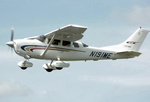
Rocker- Soldado Raso
- Cantidad de envíos : 11
Fecha de inscripción : 06/05/2017
Localización : Venezuela
 Re: Sujoi Su-30 MK2
Re: Sujoi Su-30 MK2
 Sukhoi 30MKII by Harigane, en Flickr
Sukhoi 30MKII by Harigane, en Flickr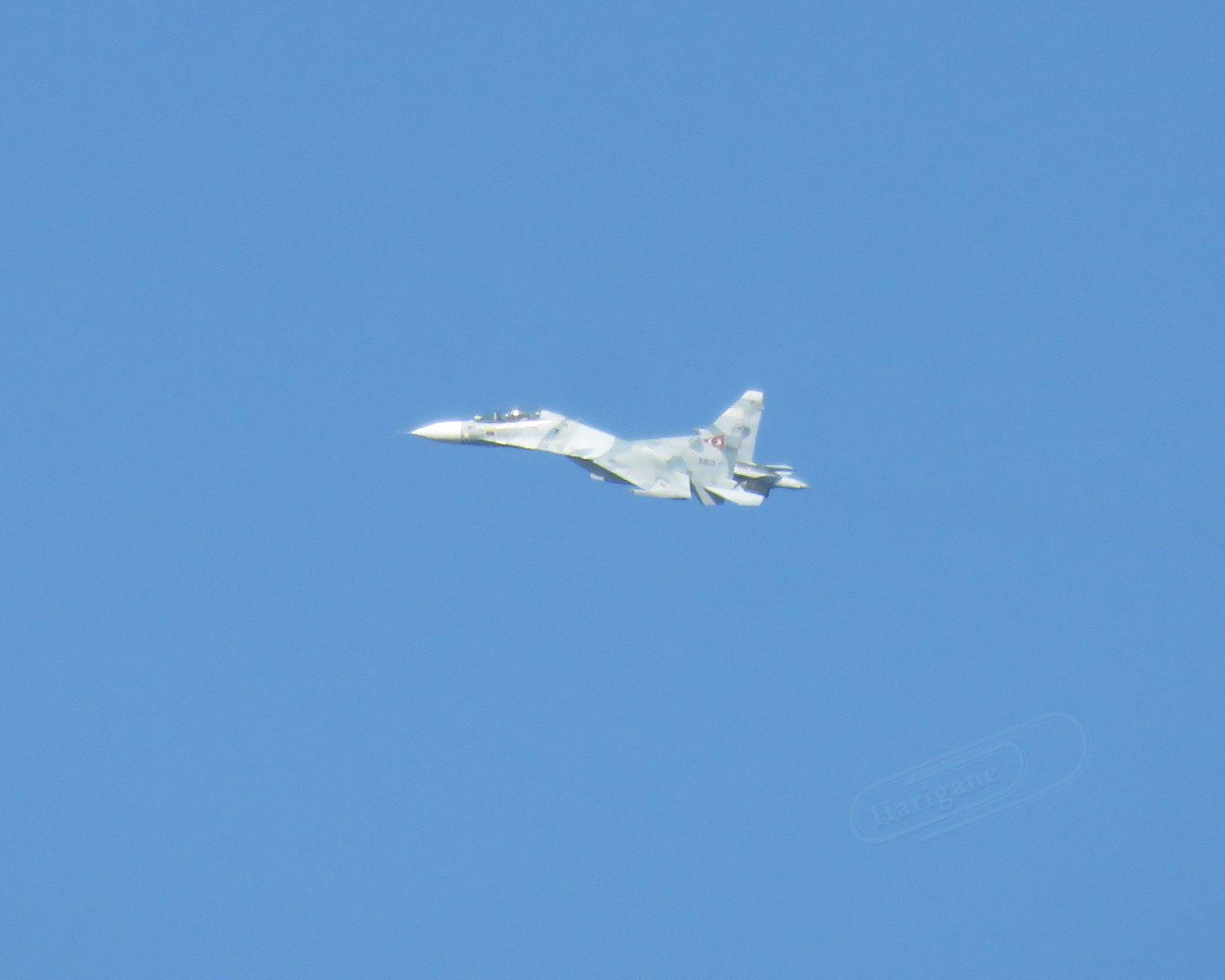 Sukhoi 30MKII by Harigane, en Flickr
Sukhoi 30MKII by Harigane, en Flickr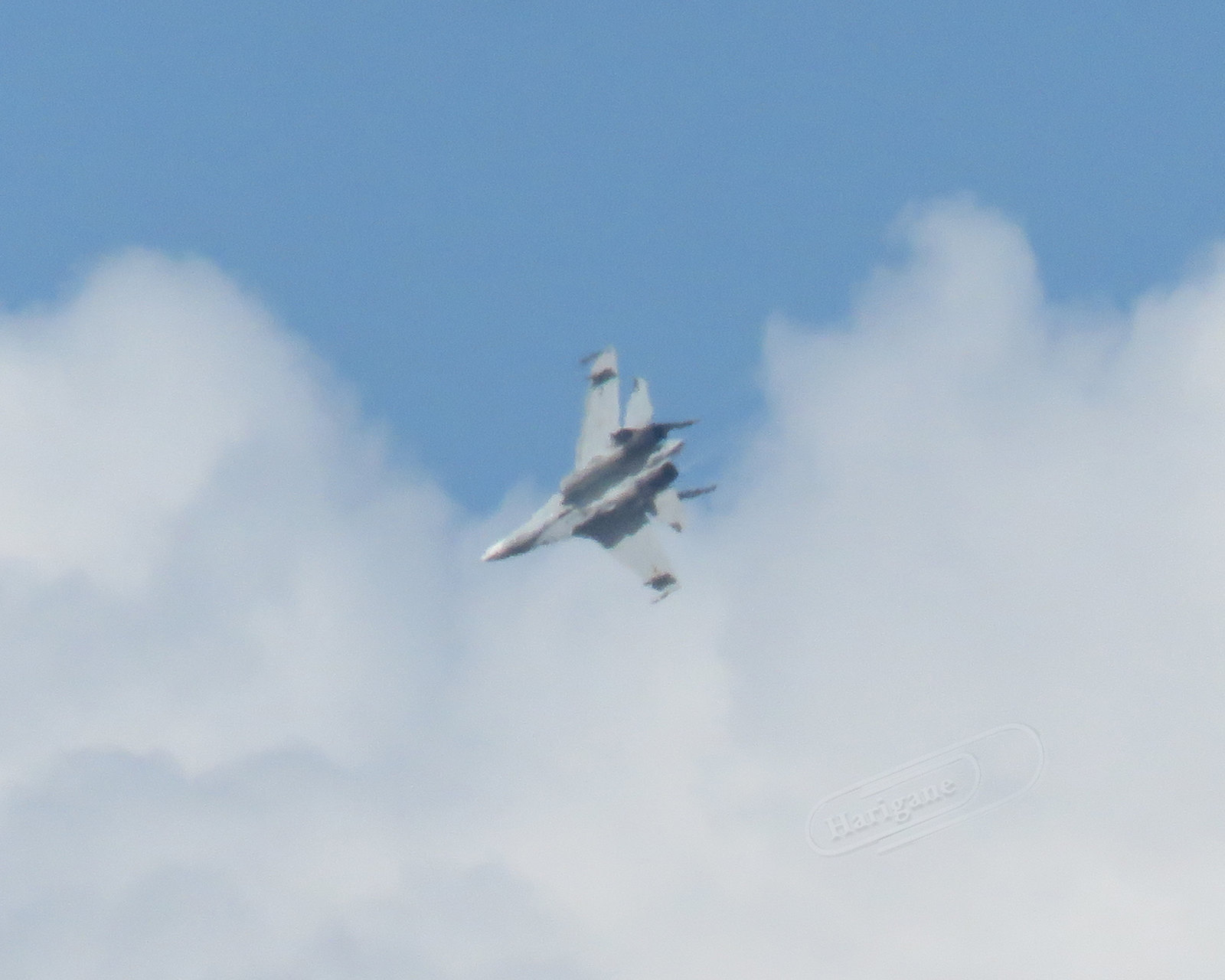 Sukhoi 30MKII by Harigane, en Flickr
Sukhoi 30MKII by Harigane, en Flickr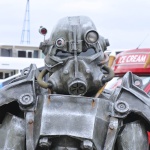
Harigane- Soldado Raso
- Cantidad de envíos : 174
Fecha de inscripción : 09/02/2015
Localización : Venezuela
 Re: Sujoi Su-30 MK2
Re: Sujoi Su-30 MK2
Estoy considerando debido a nuestra realidad actual y la pronto por venir con aires de libertad bajo un gobierno de derecha y libre mercado; que en vez de estar pujando por un sistema que si bien es cierto seria superior a lo que tenemos actualmente (Su-30MK2) como el Su-35S o Mig-35C. Podemos engrosar aún mas nuestra panoplia militar con respecto a este sistema de armas con versiones del Sujoi 30, todavía en producción en serie, osea en boga como lo es la versión Su-30SM fabricado por la planta aeronáutica Irkut del bureau de Sukhoi, adquiriendo 13 nuevos aviones para sustituir la perdida del caza en el accidente el 17 de septiembre de 2015 y agrandar la flota, lo que daría un total de 36 aeronaves, de los cuales doce de estos caza-bombarderos podrían hasta ser parte del G.A.C.#16...! 
Su-30SM: Avión de combate polivalente ruso
POR EUGENIO RODRÍGUEZEN AEROESPACIAL — 14 MAY, 2017

Su-30SM es un avión de combate polivalente desarrollado por los ingenieros de la JSC Sukhoi Design Bureau para la Fuerza Aérea Rusa, siendo un derivado avanzado de la familia de cazas Su-30MK en servicio con la Fuerza Aérea Argelina, la Fuerza Aérea India (IAF), la Fuerza Aérea Indonesia, la Fuerza Aérea del Ejército Popular de Liberación de China, la Real Fuerza Aérea de Malasia, la Fuerza Aérea de Uganda y la Fuerza Aérea Popular de Vietnam.
El caza Su-30SM fue diseñado de acuerdo con los requisitos de la Fuerza Aérea Rusa y fabricado por los ingenieros IRKUT, una empresa con sede en Rusia. El primer avión de combate Su-30SM, diseñado para el Ministerio de Defensa Ruso (MoD), realizó su primer vuelo en septiembre de 2012.
Este modelo de caza puede ser desplegado en misiones contra ataques aéreos, terrestres y marítimos, con capacidad de realizar funciones de contra-medidas electrónicas y tareas de alerta temprana. La aeronave también actúa como una plataforma de mando y control dentro de una flota de aviones de combate realizando misiones conjuntas.
Inicialmente, IRKUT y el Ministerio de Defensa de Rusia firmaron un contrato para la fabricación de los primeros 30 cazas polivalentes Su-30SM en marzo de 2012, con el objetivo de ir reemplazando paulatinamente la flota de aviones Su-24. Dado el éxito inicial de su implantación, ha mantenido un nivel de producción constante año tras año, viéndose incrementada la demanda en 2015 tras acuerdos de venta internacional con algunos países del continente asiático como Kazajistán.
El fuselaje del Su-30SM está fabricado de aleaciones de aluminio de alta resistencia y titanio, basado en los aviones Su-30MKI desarrollados conjuntamente por IRKUT y JSC Sukhoi Design Bureau, para la IAF. El morro del fuselaje alberga la cabina, las secciones de radar y el compartimento de la aviónica. En lo que respecta a sus destacadas capacidades de alta maniobrabilidad, se debe a la forma aerodinámica integral combinada con su función de vectorización de empuje.
La cabina de cristal acomoda dos pilotos en la configuración tándem, disponiendo de asientos eyectables. Asimismo, la cabina incorpora una avanzada suite de aviónica integrando visualización head-up y pantallas multifunción de cristal líquido.
El Su-30SM cuenta con un equipo de identificación de amigo/enemigo, un sistema de posicionamiento global y un sistema de navegación inercial. El diseño de arquitectura abierta permite la integración de la aviónica moderna, incluyendo un nuevo sistema de radar, sistema de radio y reconocimiento, así como otros sistemas de apoyo.
La aeronave es capaz de transportar una carga de avanzadas armas de hasta 8 toneladas, pudiendo ser equipado con una ametralladora, bombas, misiles aire-aire, misiles supersónicos anti-buque Oniks y misiles de ataque terrestres. Como resultado, el Su-30SM puede atacar amenazas aéreas, objetivos de superficie terrestre y naval desplegando sus armas aire-aire y aire-tierra guiadas/no guiadas. Además, se puede equipar con armas anti-superficie y cohetes para llevar a cabo operaciones de ataque terrestre.

El Su-30SM es propulsado por dos tuborreactores AL-31FP que generan un empuje total tras la combustión de 25.000 kgf. Asimismo, su planta motriz proporciona una velocidad de vuelo horizontal de hasta Mach 2, logrando un rango máximo de vuelo sin reabastecimiento de 3.000 km. Para necesidades de larga operatividad, el caza está equipado con un sistema de reabastecimiento de vuelo.
La aeronave cuenta con tren de aterrizaje de tipo triciclo retráctil hidráulico. Las unidades del tren de aterrizaje principal están equipadas con ruedas individuales. Cada unidad se invierte a través de un ángulo de 90° para retraerse hacia adelante en el compartimento de la raíz alar.
El tren de aterrizaje principal de activación hidráulica dispone de frenos de disco de carbón con un sistema de ventilación para el enfriamiento del freno eléctrico y un mecanismo antideslizante. Asimismo, la rueda delantera retractable es hidráulicamente orientable, mientras que el cono de cola en la popa del fuselaje integra un compartimento de paracaídas de frenado.
http://www.fierasdelaingenieria.com/su-30sm-avion-de-combate-polivalente-ruso/
Su-30SM: Avión de combate polivalente ruso
POR EUGENIO RODRÍGUEZEN AEROESPACIAL — 14 MAY, 2017

Su-30SM es un avión de combate polivalente desarrollado por los ingenieros de la JSC Sukhoi Design Bureau para la Fuerza Aérea Rusa, siendo un derivado avanzado de la familia de cazas Su-30MK en servicio con la Fuerza Aérea Argelina, la Fuerza Aérea India (IAF), la Fuerza Aérea Indonesia, la Fuerza Aérea del Ejército Popular de Liberación de China, la Real Fuerza Aérea de Malasia, la Fuerza Aérea de Uganda y la Fuerza Aérea Popular de Vietnam.
El caza Su-30SM fue diseñado de acuerdo con los requisitos de la Fuerza Aérea Rusa y fabricado por los ingenieros IRKUT, una empresa con sede en Rusia. El primer avión de combate Su-30SM, diseñado para el Ministerio de Defensa Ruso (MoD), realizó su primer vuelo en septiembre de 2012.
Este modelo de caza puede ser desplegado en misiones contra ataques aéreos, terrestres y marítimos, con capacidad de realizar funciones de contra-medidas electrónicas y tareas de alerta temprana. La aeronave también actúa como una plataforma de mando y control dentro de una flota de aviones de combate realizando misiones conjuntas.
Inicialmente, IRKUT y el Ministerio de Defensa de Rusia firmaron un contrato para la fabricación de los primeros 30 cazas polivalentes Su-30SM en marzo de 2012, con el objetivo de ir reemplazando paulatinamente la flota de aviones Su-24. Dado el éxito inicial de su implantación, ha mantenido un nivel de producción constante año tras año, viéndose incrementada la demanda en 2015 tras acuerdos de venta internacional con algunos países del continente asiático como Kazajistán.
El fuselaje del Su-30SM está fabricado de aleaciones de aluminio de alta resistencia y titanio, basado en los aviones Su-30MKI desarrollados conjuntamente por IRKUT y JSC Sukhoi Design Bureau, para la IAF. El morro del fuselaje alberga la cabina, las secciones de radar y el compartimento de la aviónica. En lo que respecta a sus destacadas capacidades de alta maniobrabilidad, se debe a la forma aerodinámica integral combinada con su función de vectorización de empuje.
La cabina de cristal acomoda dos pilotos en la configuración tándem, disponiendo de asientos eyectables. Asimismo, la cabina incorpora una avanzada suite de aviónica integrando visualización head-up y pantallas multifunción de cristal líquido.
El Su-30SM cuenta con un equipo de identificación de amigo/enemigo, un sistema de posicionamiento global y un sistema de navegación inercial. El diseño de arquitectura abierta permite la integración de la aviónica moderna, incluyendo un nuevo sistema de radar, sistema de radio y reconocimiento, así como otros sistemas de apoyo.
La aeronave es capaz de transportar una carga de avanzadas armas de hasta 8 toneladas, pudiendo ser equipado con una ametralladora, bombas, misiles aire-aire, misiles supersónicos anti-buque Oniks y misiles de ataque terrestres. Como resultado, el Su-30SM puede atacar amenazas aéreas, objetivos de superficie terrestre y naval desplegando sus armas aire-aire y aire-tierra guiadas/no guiadas. Además, se puede equipar con armas anti-superficie y cohetes para llevar a cabo operaciones de ataque terrestre.

El Su-30SM es propulsado por dos tuborreactores AL-31FP que generan un empuje total tras la combustión de 25.000 kgf. Asimismo, su planta motriz proporciona una velocidad de vuelo horizontal de hasta Mach 2, logrando un rango máximo de vuelo sin reabastecimiento de 3.000 km. Para necesidades de larga operatividad, el caza está equipado con un sistema de reabastecimiento de vuelo.
La aeronave cuenta con tren de aterrizaje de tipo triciclo retráctil hidráulico. Las unidades del tren de aterrizaje principal están equipadas con ruedas individuales. Cada unidad se invierte a través de un ángulo de 90° para retraerse hacia adelante en el compartimento de la raíz alar.
El tren de aterrizaje principal de activación hidráulica dispone de frenos de disco de carbón con un sistema de ventilación para el enfriamiento del freno eléctrico y un mecanismo antideslizante. Asimismo, la rueda delantera retractable es hidráulicamente orientable, mientras que el cono de cola en la popa del fuselaje integra un compartimento de paracaídas de frenado.
http://www.fierasdelaingenieria.com/su-30sm-avion-de-combate-polivalente-ruso/

MIG- Cabo Segundo
- Cantidad de envíos : 2196
Fecha de inscripción : 24/01/2010
Localización : La Guayana Esequiba
 Re: Sujoi Su-30 MK2
Re: Sujoi Su-30 MK2
ESE ES DE IRKUT
VAMOS POR EL Su-35BM
MiG NO SE COMPRA PORQUE NO HAY TALLER
VAMOS POR EL Su-35BM
MiG NO SE COMPRA PORQUE NO HAY TALLER

CHACAL- Sargento Primero
- Cantidad de envíos : 4269
Fecha de inscripción : 09/03/2013
Localización : Ejido
 Re: Sujoi Su-30 MK2
Re: Sujoi Su-30 MK2
CHACAL escribió:ESE ES DE IRKUT
VAMOS POR EL Su-35BM
MiG NO SE COMPRA PORQUE NO HAY TALLER
Por lo que tengo entendido ese Su-35BM es un demostrador, los de producción en serie llevan nomenclatura "S" y dudo mucho que lleguen esos Su-35 es un país en crisis y casi cercano al "Default" financiero como nunca antes visto en esta república..!

MIG- Cabo Segundo
- Cantidad de envíos : 2196
Fecha de inscripción : 24/01/2010
Localización : La Guayana Esequiba
 Re: Sujoi Su-30 MK2
Re: Sujoi Su-30 MK2
Mig te gusta criticar y realmente eres una persona parcializada que carece de criterio y mucha información falsa, por mas que tu mientas y digas barbaridades por mas que digas tus mentiras no eres ni la sombra de Paul Joseph Goebbels, pareces el imitador mas malo de ese hombre. Dar lastima nunca siempre produce compasión. jajajajaja saludos y deja de confundir.

rafahot59- Distinguido
- Cantidad de envíos : 1154
Fecha de inscripción : 02/06/2010
Edad : 54
Localización : caracas
 Re: Sujoi Su-30 MK2
Re: Sujoi Su-30 MK2
rafahot59 escribió:Mig te gusta criticar y realmente eres una persona parcializada que carece de criterio y mucha información falsa, por mas que tu mientas y digas barbaridades por mas que digas tus mentiras no eres ni la sombra de Paul Joseph Goebbels, pareces el imitador mas malo de ese hombre. Dar lastima nunca siempre produce compasión. jajajajaja saludos y deja de confundir.

Igualito vamos a ver quien tendrá la mayoria aplastante, que comience el juego a pesar de tener el arbitro socialista parcializado, total en Diciembre 2015 con este mismo CNE parcializado se gano y por goleada..!

MIG- Cabo Segundo
- Cantidad de envíos : 2196
Fecha de inscripción : 24/01/2010
Localización : La Guayana Esequiba
Página 21 de 39. •  1 ... 12 ... 20, 21, 22 ... 30 ... 39
1 ... 12 ... 20, 21, 22 ... 30 ... 39 
Página 21 de 39.
Permisos de este foro:
No puedes responder a temas en este foro.





